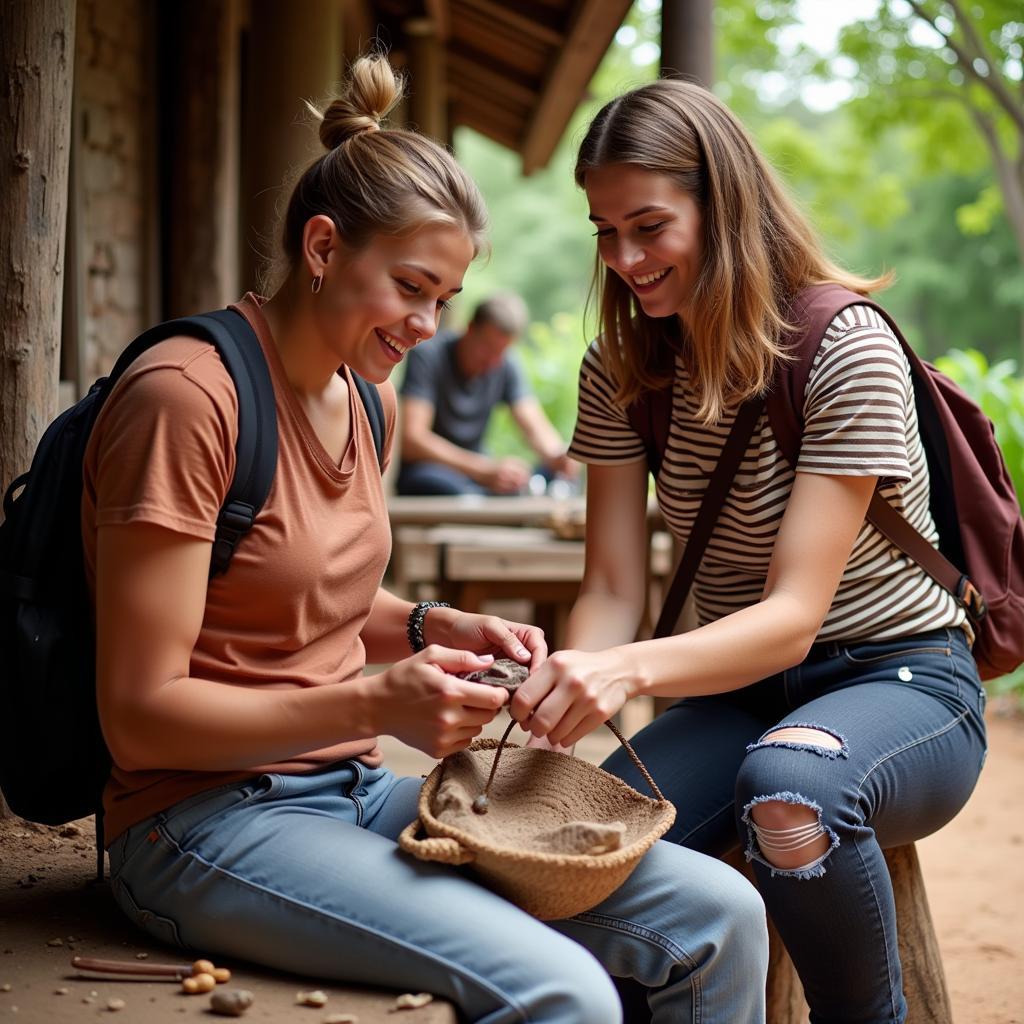The Powerful Roar: Understanding the African Buffalo Sound
The distinctive African Buffalo Sound, a mix of grunts, snorts, and bellows, is a crucial element of their complex social structure and survival in the African savanna. This article delves into the various vocalizations of these magnificent creatures, exploring their meanings and significance within the herd. We’ll examine how these sounds contribute to communication, defense strategies, and the overall dynamics of African buffalo life.
Decoding the African Buffalo’s Vocalizations
African buffaloes are highly social animals, living in large herds that can number in the hundreds or even thousands. Their communication system is intricate, relying heavily on a variety of vocalizations to maintain cohesion and respond to threats. From low rumbling grunts to high-pitched distress calls, each sound serves a specific purpose within the herd. For instance, a soft, low grunt might signify contentment, while a loud bellow can warn of impending danger. Understanding these nuances allows us to appreciate the complex social intelligence of these often-underestimated creatures.
Check out this amazing African Cats Adventure to see these majestic creatures in their natural habitat.
The dominant bulls often use loud, deep bellows during mating season to establish dominance and attract females. Their vocalizations play a crucial role in maintaining the herd’s social hierarchy and preventing internal conflicts. Furthermore, the synchronized movements and collective vocalizations of the herd can intimidate predators, showcasing the power of their collective strength.
The African Buffalo’s Warning Calls: A Symphony of Survival
The African buffalo sound plays a crucial role in predator defense. When threatened by lions, leopards, or hyenas, the buffalo employ a complex series of calls to alert the herd and coordinate a defense. The initial warning might be a sharp bark or snort, followed by a chorus of bellows and grunts as the herd closes ranks. This coordinated vocal response serves both to intimidate the predator and to strengthen the bonds within the herd, demonstrating the power of collective defense.
The African buffalo’s vocal repertoire extends beyond just warning calls. They use a variety of sounds to communicate during everyday activities like grazing, migrating, and social interactions. For instance, mothers use soft, gentle calls to communicate with their calves, fostering a strong bond between them. These subtle vocalizations are a testament to the depth and complexity of African buffalo communication.
What Does an African Buffalo Sound Like in Different Situations?
The specific African buffalo sound varies depending on the context. A contented buffalo might emit a low rumble, while an agitated one might snort or bellow loudly. Calves have their own distinct calls, used to communicate with their mothers or express distress. Understanding these variations helps us gain a deeper insight into the emotional lives of these animals and their intricate social dynamics.
Do you want to learn more about African animals? Check out our African Animals Video for Kids. It’s packed with fun facts and engaging visuals!
The Significance of African Buffalo Sound in Research and Conservation
Studying African buffalo sound provides valuable insights into their behavior, social structure, and ecological role. Researchers use acoustic monitoring to track buffalo populations, understand their movement patterns, and monitor their responses to environmental changes. This information is critical for developing effective conservation strategies to protect these magnificent creatures and their habitats. Learning about the African Buffalo migration patterns helps conservationists understand the challenges these animals face.
The African buffalo sound, a powerful symbol of the African wilderness, serves as a constant reminder of the importance of preserving these magnificent creatures and their habitats.
Conclusion
The African buffalo sound is more than just a noise; it’s a complex language that reveals the intricate social lives and survival strategies of these magnificent creatures. From warning calls to gentle grunts, each vocalization plays a crucial role in the herd’s dynamics and their interaction with the environment. By understanding the nuances of their vocalizations, we can gain a deeper appreciation for the intelligence and resilience of the African buffalo. Exploring resources like the African Jewel Lodge can provide further insight into the rich biodiversity of the African continent.
FAQs
-
What is the most common African buffalo sound?
- Grunts and bellows are the most common sounds, used in various contexts.
-
Do African buffaloes make different sounds for different predators?
- While the intensity may vary, the core warning calls are generally similar.
-
How far can an African buffalo’s call travel?
- Their powerful bellows can travel several kilometers across the open savanna.
-
Can humans understand African buffalo sounds?
- With careful observation and study, researchers can interpret the general meaning of their vocalizations.
-
Do African buffaloes use other forms of communication besides sound?
- Yes, they also use body language, scent marking, and physical displays.
-
How can I learn more about other African animals?
- Check out this resource on African animals beginning with n.
Do you have any more questions about the sounds of the African buffalo or other African wildlife? Check out our articles on African wildlife.
When you need assistance, contact us by phone: +255768904061, email: kaka.mag@gmail.com, or visit our address: Mbarali DC Mawindi, Kangaga, Tanzania. Our customer service team is available 24/7.

